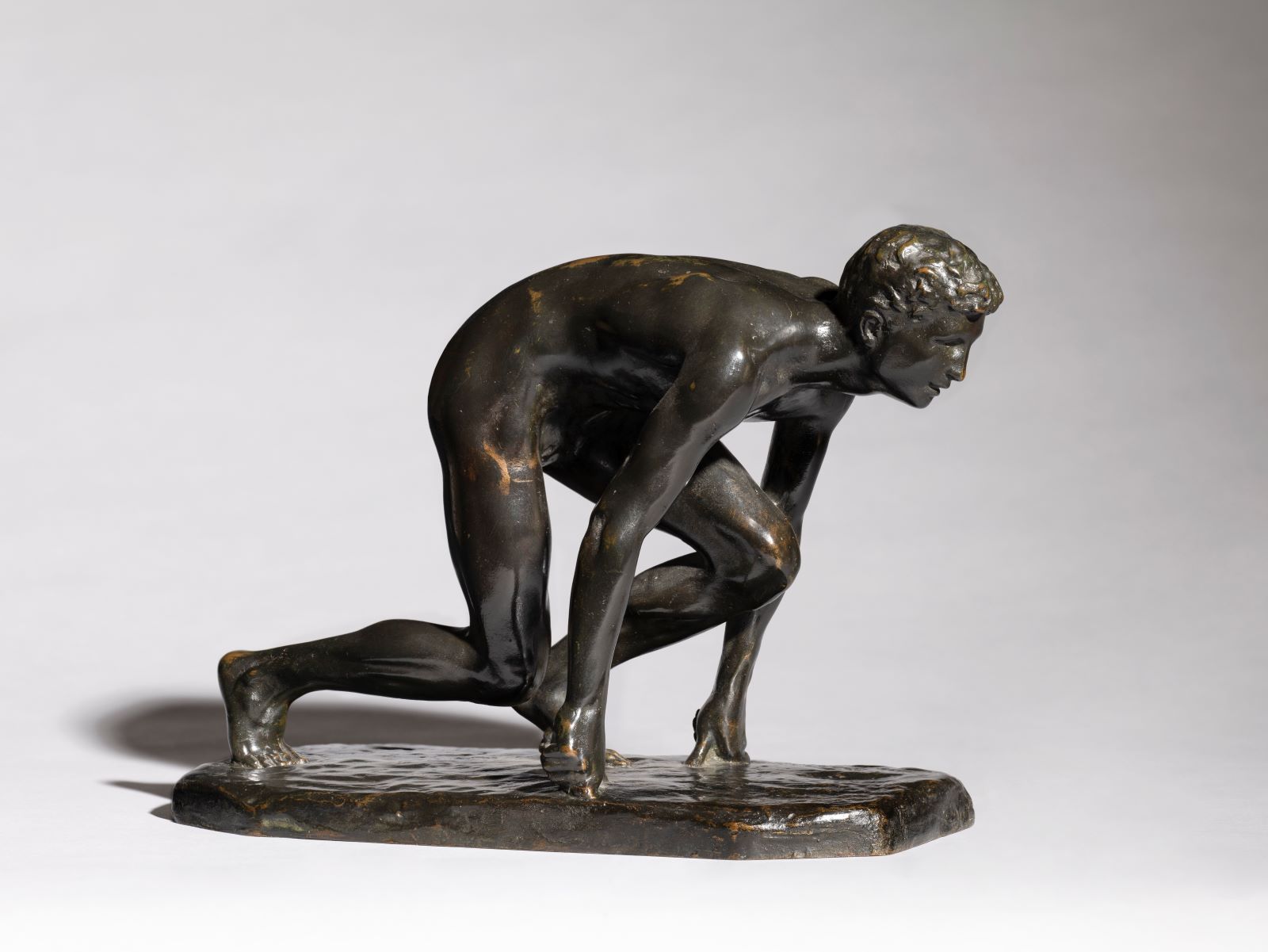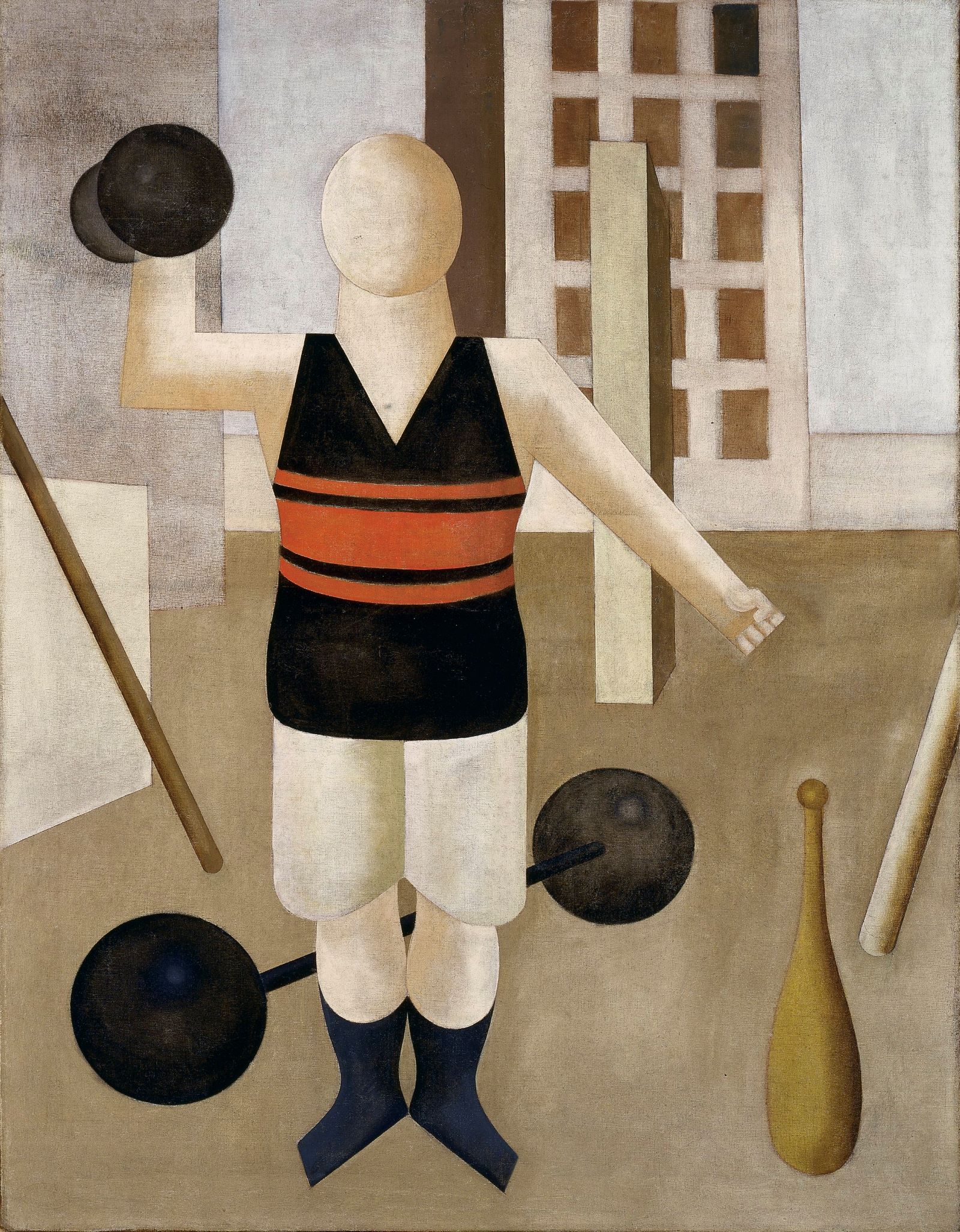A new exhibition – Paris 1924 - opening on 19 July at the Fitzwilliam Museum is co-curated by Christ’s Fellow and Professor of Classics, Caroline Vout with medievalist and sports historian, Professor Chris Young.
Four years in the making, the exhibition explores sport, art and bodies and coincides with the 2024 Paris Olympics which begin next week. Professor Vout, whose book Exposed won the London Hellenic Prize in 2023 has drawn on her work on the body and on the history of Greek and Roman art and its reception in the modern period.
Paris 1924 displays a range of media including classical antiquities and bronzes from the 1920s, through football boots and flapper dresses, to doodles by Picasso, paintings by Delaunay, Grosz and Baumeister, medals, and memorabilia.
Professor Vout said:
“Paris 1924 speaks not only of an Olympic moment but to interwar ideas of race, gender, beauty, celebrity, nationhood, and body-image. It demonstrates how sport is more than exercise; it is culture.”
Sculptures of athletes by Canadian physician, educator, sculptor and sportsperson, Robert Tait McKenzie demonstrate the debt the 1924 Olympics owed to ancient Greece, and are juxtaposed with newer ways of representing the body by breaking it down into pieces created by artists such as George Grosz.

Professor Vout said:
“Some of these new ways of representing the body were a response to the First World War and the disabilities which it caused. Modernism and classicism come into dialogue in ways that radically reform what we understand a human body to be.”

And there is a link with Christ’s College. McKenzie’s first exhibition after World War I was in New Bond Street, London and was visited by the then Master of Christ’s Arthur Shipley, who successfully recommended the artist to the Cambridge War Memorial Committee.
McKenzie stayed with Shipley in the Lodge and modelled the head of the figure on the War Memorial that now stands outside the University Botanic Gardens on Hills Road on the youths he saw going back and forth from the College's library and garden.
Athlete Ralph Starr from Christ’s competed in the 5000 metres in the 1924 Olympics, where students and alumni of Cambridge University won 11 medals.

But the curators stress that this is not a show about Cambridge with lenders from as far afield as New Mexico and Serbia and six sections including ‘Sport as Art’ - there were medals in 1924 for painting and sculpture as well as for running and swimming - ‘Sport and Sex’, and ‘Sport Sells’.
Beyond the exhibition, the Museum of Classical Archaeology - whose Director is Professor Vout - will collaborate with the Fitzwilliam to produce resources to take out to new audiences in parks, sports clubs and football stadia.
Paris 1924 is at the Fitzwilliam Museum from 19 July – 3 November 2024. Free entry. Book in advance.
Read more Paris 1924: Beyond Chariots of Fire.
Image credits
Sprinter: National Trust Images. Photo Jaron James
The Gymnast: Collection of the McNay Art Museum, Gift of Robert L. B. Tobin, 1974.26. © Estate of George Grosz, Princeton, N.J. / DACS 2024
Participation medal, Paris 1924 Olympic Games, 1924, Raoul Bénard (1881-1961), designer; Monnaie de Paris (founded 864), manufacturer, Bronze, 5.5 cm, © The Fitzwilliam Museum, Cambridge
Banner Image: Detail from The Runners, About 1924, Robert Delaunay (1885–1941), Oil paint on canvas, National Museum of Serbia
Feature Box: Renée Sintenis, The Athlete (Nurmi), 1926, bronze, © Leicester Museums and Galleries

